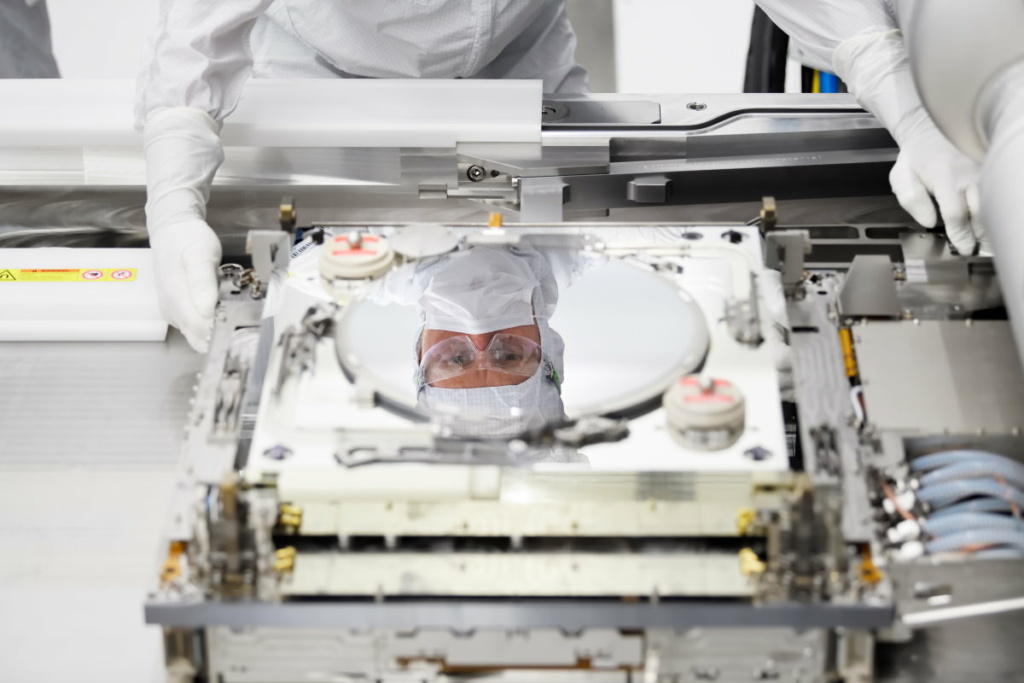
ASML brushes off chip market headwinds
Presenting Q1 results Wednesday, ASML maintains its full-year and long-term growth expectations despite signs of weakness in the semiconductor market. “We continue to see mixed signals on demand from the different end-market segments,” CEO Peter Wennink says, adding that “the overall demand still exceeds our capacity for this year.”
A quick tour of ASML’s largest customers reveals that the chip market has indeed seen better days. Last week, TSMC reported a year-on-year sales drop of 15 percent in March, a sign that inflation and cooling economies have tempered consumers’ appetites for electronics. Expecting the market to pick up in the second half of the year, the Taiwanese foundry has adjusted capital spending plans to 32-36 billion euros this year, down from the 36 billion euros penciled in originally.
Samsung’s operating profit sank to an eight-year low last quarter, and although initially, the Korean giant wouldn’t buckle under market pressure, it said last week that memory output would be reduced. No announcement has been made on whether spending would be cut, but competitors Hynix and Micron have slashed their capex by 50 and 30 percent, respectively.
Intel, finally, posted dismal quarterly and 2022 annual results, citing a combination of excess inventory at retailers and a cooling market for consumer electronics. The company has announced cost-cutting measures and is expected to reduce its capex from about 25 billion dollars in 2022 to 20 billion this year.
Memory customers are limiting their capex and wafer output as they’re trying to burn off inventory, ASML CFO Roger Dassen confirms. To a lesser extent, that’s happening in some logic segments as well, although particularly in the mature-node realm demand remains “very, very strong.” Additionally, both logic and memory makers continue to make strategic investments supporting technology transitions, Dassen notes.
Overall, the headwinds aren’t weighing down ASML’s business. “Some major customers are indeed delaying the timing of their demand for certain tools, while we see other customers actually picking up that shift. So the demand is still higher than supply, albeit at a slightly lower cushion level than we had last quarter,” CFO Dassen explains.
Bulging
Dassen stresses that we shouldn’t read too much into the order intake drop this quarter. After the previous year saw two quarters with 8+ billion euros intake along with 7 and 6.3 billion euros, 23Q1’s bookings came in quite a bit lower at 3.8 billion euros. “That was expected given the current business environment,” he says. He also notes a saturation effect, pointing to a bulging order book of 39 billion euros. That corresponds to roughly two full years of system sales.
Export restrictions won’t throw a spanner in the works, either. Even though the Netherlands and Japan are set to ban sales of advanced DUV immersion scanners to Chinese customers, Dassen expects sales to China will pick up this year in accordance with the country’s 20 percent share in ASML’s backlog. China’s semiconductor industry, especially following the announcement of the export restrictions, is mostly focusing on mature semiconductors these days.
Expectations
Booked solid, ASML is sticking to its previous revenue growth expectation of 25 percent this year. Longer-term growth drivers, detailed at an investor event last November, remain intact as well, Dassen indicates. These will take sales to 30-40 billion euros in 2025 and 44-60 billion euros by 2030. “The number one objective for us is still to make sure that we optimize supply and that indeed we can deliver and that we can live up to the expectations that are out there.”
Main picture credit: Bart van Overbeeke/ASML





